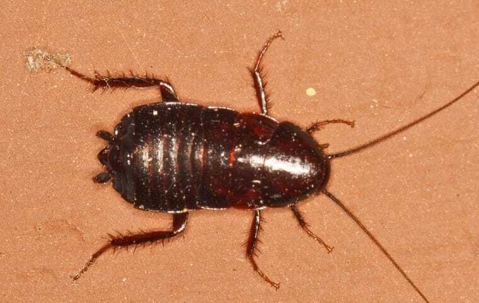Most people don’t really care to learn more about cockroaches other than, “They’re gross and unwanted.” While this mentality is certainly accurate, it’s also important to learn all you can about different pest species, since knowing your enemy is the best way to beat them. Oriental cockroaches, for instance, are some of the largest invasive cockroaches around. Learning how you can protect your property from them will ensure that you never have to witness them up close and personal.
What Are Oriental Cockroaches?
The cockroaches that you probably think of are either American cockroaches or German cockroaches. The former is the largest invasive species in the world, while the latter is the most common. Oriental cockroaches may be less frequent invaders of human structures, but they bring many of the same problems. That’s why it pays to know what to look for:
- Size: Oriental cockroaches are some of the largest invasive insects, with most growing to about an inch long on average.
- Color: The easiest way to tell them apart from other cockroaches is their color and sheen. Oriental cockroaches are shiny and black whereas other species of roach tend to be brown or reddish.
- Shape: Oriental cockroaches have round-top shells, making them look more like oversized pill bugs than cockroaches.
Are They Dangerous?
All cockroaches are considered dangerous. That’s because they can spread diseases and they are known for attacking food sources and leading to contamination. Oriental cockroaches are mostly known for spreading gastrointestinal diseases, usually resulting from when their droppings come into contact with the food that we eat. Here are some of the other problems associated with a cockroach infestation:
- Damage: Cockroaches can stain common household items, either with their streaky bodies or their droppings. They may also chew through linens and food packaging.
- Allergies: The dander and dust that clings to a cockroach’s bodies mean they can cause worsened allergies. People with respiratory illnesses are especially vulnerable.
- Proliferation: Cockroaches reproduce in large numbers, meaning they quickly overtake a property. More cockroaches mean more exposure to these other dangers.
How Can You Prevent Cockroaches?
It’s important to note that most at-home pest control methods aren’t fool-proof. Even clean properties can wind up with an infestation, which is why there is no beating overall pest control services, like those provided by EnSec. Like all pest problems, cockroach prevention is really about limiting the factors that attract them in the first place. Here are some ways to do that:
- Food Storage: Don’t leave food sitting out or left in locations that are easy for pests to access.
- Trash Storage: Cockroaches don’t mind if food is in the trash, which is why proper trash storage is also recommended.
- Deep Cleaning: It won’t matter how well-kept your food and trash are if cockroaches can simply scavenge for crumbs and spills. You should clean regularly, especially under heavy appliances or other tough-to-reach areas.
How Do We Get Rid Of Oriental Cockroaches?
Even property owners who take pains to prevent an infestation can still wind up with cockroaches. That’s why the best form of protection comes from the experts at EnSec. From routine inspections to effective treatments, professional assistance is the best way to ensure that a pest problem is properly dealt with. At-home solutions or store-bought products may not get the job done. Even if they work to kill some cockroaches, they likely won’t have any effect on their eggs -- especially since you’re not exactly trained in all places to look for cockroaches. That means you may waste money and not even solve the problem. Instead, turn directly to the pros, who can completely eliminate pests or, at the very least, help you tell for sure if they are already a problem. Contact EnSec of Alabama for more information on how you can avoid Oriental cockroaches.

